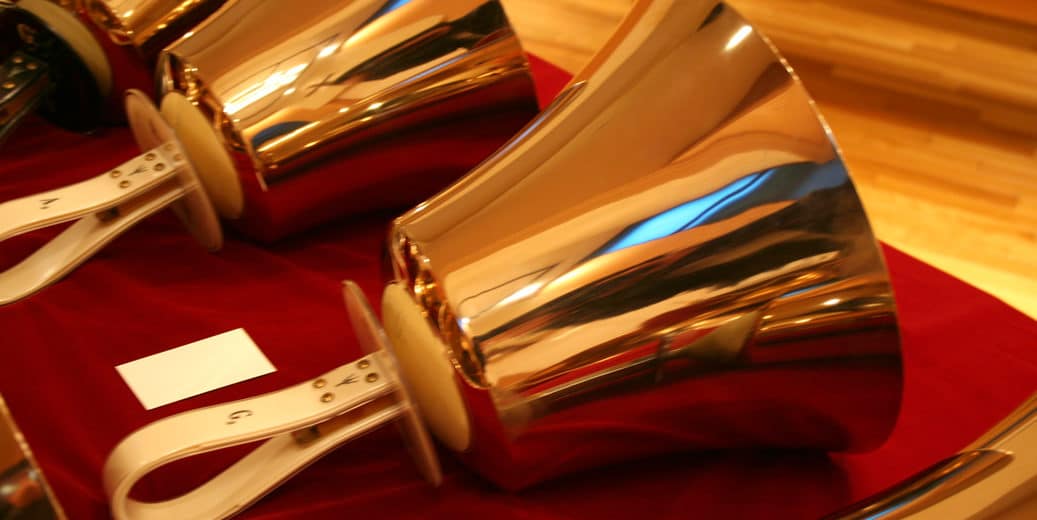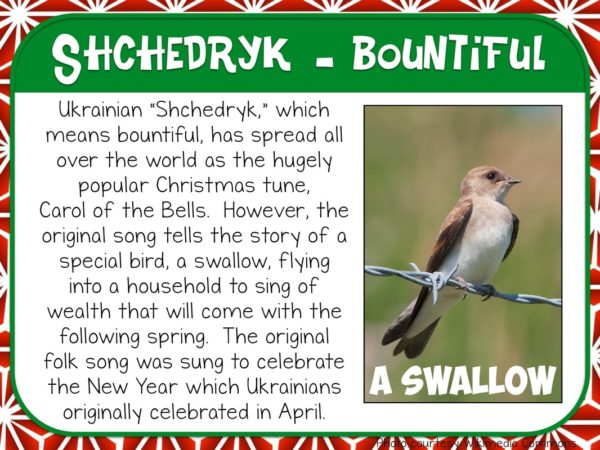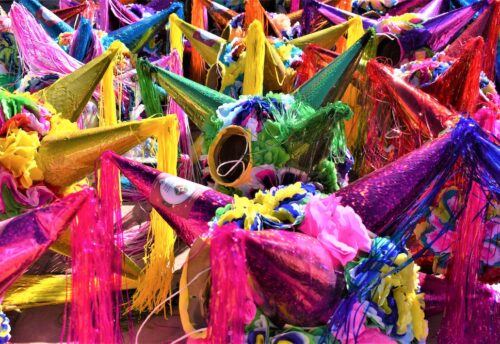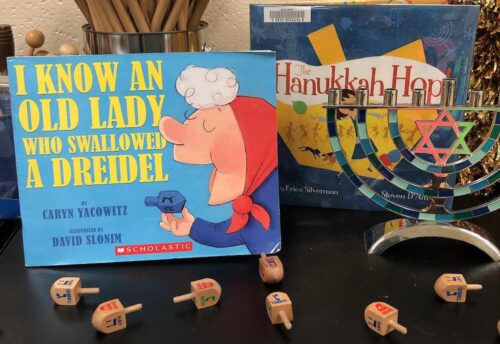
Carol of the Bells – Favorite Winter Folk Song
 You would think that teaching “Carol of the Bells” should be a slam dunk. Kids most likely know the song from the radio or tv or a movie soundtrack. But this is another one of those classic favorites that I would call a “song on the fringe.” We know it, but not very well. We can immediately sing a snippet of it, but that’s about as much as we can do. Is is a Christmas song? Thanksgiving? It’s a song on the fringe. We know it, but not as well as we could.
You would think that teaching “Carol of the Bells” should be a slam dunk. Kids most likely know the song from the radio or tv or a movie soundtrack. But this is another one of those classic favorites that I would call a “song on the fringe.” We know it, but not very well. We can immediately sing a snippet of it, but that’s about as much as we can do. Is is a Christmas song? Thanksgiving? It’s a song on the fringe. We know it, but not as well as we could.
When you spend a little time looking into the history of the song, you find some really fascinating connections. This song is at once ancient and also very new depending on which part of its history you focus on. Today I want to share a bit of that history with you and go through some of the resources that I use when I teach this fun little folk song. If you have a favorite activity for “Carol of the Bells” leave a comment below and share your idea with me and anyone else who reads this blog post!
To Sing or Not to Sing – Learning the Song
With this song, I take a different approach than normal. Usually I would sing the whole song and then teach the music phrase by phrase until kids are able to sing the song. You would probably want to teach Carol of the Bells with lyrics on the board or in kids hands because there are so many lyrics that are all sung to the same melody (lyrics in hands – something I don’t normally do). You would also want to teach this song slowly so that kids can really get the order into their head before you move on to a new phrase. It’s easy to confuse what words go where since so much of the song sounds the same. You could add actions or movements to try and help clarify the words and word order. If you do decide to sing the song, this could easily become a holiday program showcase where some kids play handbells and others sing. If nothing else, it could just be a classroom favorite.
But I’ll be honest, with “Carol of the Bells” I don’t teach the song with the intent that kiddos will sing, but instead using this as a music listening and music history lesson. I choose to take a non-singing route for a number of reasons. I think it would take a long time for kids to learn the music and/or be able to sing the words in the right order. It feels like the kind of song where you would spend the majority of the lesson hammering in the right pitches and word order and in the process you would lose the fun.
Maybe this is because the song is just a little “too old” for the kids (meaning this is content that might be more appropriate for middle level or above). Perhaps kids would stay invested, but they might just get mentally tired too quickly. I choose to focus on the history and backstory because I know that kids will hear this song for the rest of their life. It’s likely that they’ll sing some sort of arrangement of the song in middle school or in high school, so why beat it into them now.
Carol of the Birds?
If you do decide to teach the history of this fun folk song, you’ll learn pretty quickly that it is NOT what it seems. We so often hear this song with lyrics about bells ringing and good cheer, but its origins are much older and more intricate. Carol of the Bells is actually based on an old folk melody from Ukraine with lyrics that have nothing to do with bells or Christmas cheer.
The song as we know it today was originally written down and recorded in the year 1904, though it is much older than that (maybe hundreds of years older). The original lyrics that went along with this song have nothing to do with bells, but more with birds. Ukrainian “Shchedryk,” which means bountiful, has spread all over the world as the hugely popular Christmas tune, Carol of the Bells. However, the original song tells the story of a special bird, a swallow, flying into a household to sing of wealth that will come with the following spring. The original folk song was sung to celebrate the New Year which Ukrainians originally celebrated in April. Want to hear the song sung with the original lyrics? Check out this video!
Schendryk was first formally written down in 1904, but years later the Ukrainian National Chorus made this song famous during its concert tour of Europe and the Americas in the early 1900s. People immediately loved the song and catchy melody and wanted to sing along but couldn’t catch the words in their original language. So, an English text was created by Peter Wilhousky in the 1930s, and since then it has been performed and sung during the Christmas season. Wilhousky was the first person to make this song about bells instead of birds.
Talking about The Tune
 I feel like this is a great moment to talk about folk song variation and the vocabulary word: tune. I usually say that a tune is simply a melody without words. Many times people will write words to go along with a tune, but sometimes a tune will be sung or played with no lyrics. One easy example to teach tune is the song “Twinkle Twinkle.” Have kids sing “twinkle twinkle” Then have them sing “The ABCs” song and they’ll soon discover that both songs have the same tune. Then have them sing the song without any words at all. You can easily add new words, but the tune remains the same.
I feel like this is a great moment to talk about folk song variation and the vocabulary word: tune. I usually say that a tune is simply a melody without words. Many times people will write words to go along with a tune, but sometimes a tune will be sung or played with no lyrics. One easy example to teach tune is the song “Twinkle Twinkle.” Have kids sing “twinkle twinkle” Then have them sing “The ABCs” song and they’ll soon discover that both songs have the same tune. Then have them sing the song without any words at all. You can easily add new words, but the tune remains the same.
With Carol of the Bells it is SO EASY to talk about using a tune and adding words that fit your specific purpose because the words we know to the English-language song “Carol of the Bells” really have no connection with the original, ancient Ukranian song. You could have a really fascinating discussion about why the author of the English lyrics, Peter Wilhousky, chose to make this about bells and the Christmas season. Was it because we needed another Christmas song? Was it because he thought the music sounded Christmas-y? Was it because he knew this would be wildly popular as a Christmas carol?
If you want to talk more about tune/lyrics, one folk song you can use to talk about variation is the song “Buffalo Gals.” With this song, people would change the name of the song to fit their city, e.g. Cincinnati Gals or Chicago Gals. Wherever the song was sung, that’s the name of the city that was added to the song. If you want a holiday song to talk about tune and different lyrics you could explore the song “Greensleeves” or “What Child is This.” Just like “Carol of the Bells,” the tune for this song is ancient and could be used as an instrumental piece. With “Greensleeves” there is a really fun history behind the lyrics because the sonnet for “Greensleeves” might have been written by Henry VIII. The sacred lyrics for “What Child Is This” came a couple hundred years later but are just as popular now.
Teaching the Vocabulary
 Once we’ve spent some time talking about the historical version of the song, we’ll spend time with the English-language version that they probably know: Carol of the Bells. We talk through the lyrics a bit and discuss how the author of the lyrics compares the bells to people singing. Bells can’t actually speak, but he is guessing what they would say if they could talk. He thinks they would say happy words of good cheer. He even compares the bells to carolers and the songs that those happy people would sing.
Once we’ve spent some time talking about the historical version of the song, we’ll spend time with the English-language version that they probably know: Carol of the Bells. We talk through the lyrics a bit and discuss how the author of the lyrics compares the bells to people singing. Bells can’t actually speak, but he is guessing what they would say if they could talk. He thinks they would say happy words of good cheer. He even compares the bells to carolers and the songs that those happy people would sing.
This gives me a chance to talk about one of my favorite things, “Onomatopoeia.” In this song we sing the words “Ding Dong” quite a few times. Does the bell really say “ding dong?” Does it actually make that sound? Someone made up the words “ding dong” to mimc the sound that the bells really make. That’s called the onomatopoeia because it’s the formation of a word from a sound (like how bacon “sizzles” or a bird might “chirp.” ). Kids LOVE this idea and we can spend a few minutes thinking about other words that do this. Have some boys that are not interested? Make the connection to comic books and the “Pow! Pfoom! Bam!” that they might find there.
I also make a point to talk a little bit about bell choirs and bell towers. Not all kids are exposed to bells in this way and often a kids’ only understanding of bells might be sleigh bells and “Jingle Bells.” I talk about bell towers in cathedrals and show them this slide about bells and how they have been used historically to draw people in or tell the time. Lots of kids just don’t know this history and/or haven’t seen a structure like this. Maybe they walk by or live near a church that has a big tower like this, but so many churches don’t ring bells anymore (because their bell towers have fallen out of fashion or are in disrepair).
I hope you had fun reading about how I introduce and play around with this fun little folk song/carol. There are endless opportunities for “what comes next” with this song. If you have any other ideas of how to extend the lesson, please leave them in the comments below so that we can all gain ideas for the next time we teach this song!
If you liked the visuals and resources you saw in the above blog post then check out this Favorite Carol Teacher Kit for the song. I have it available to download as a PowerPoint presentation and also a PDF file. Included in the set are a lot more pages of historical context, vocabulary, background for the song, visuals, several other video/media links, and many other aids for teaching. You can use the PowerPoint for visuals and explanation as you teach or you can post the images out in the hallway as a bulletin board that reinforces the content you teach in class (or you can do both)!






One Comment